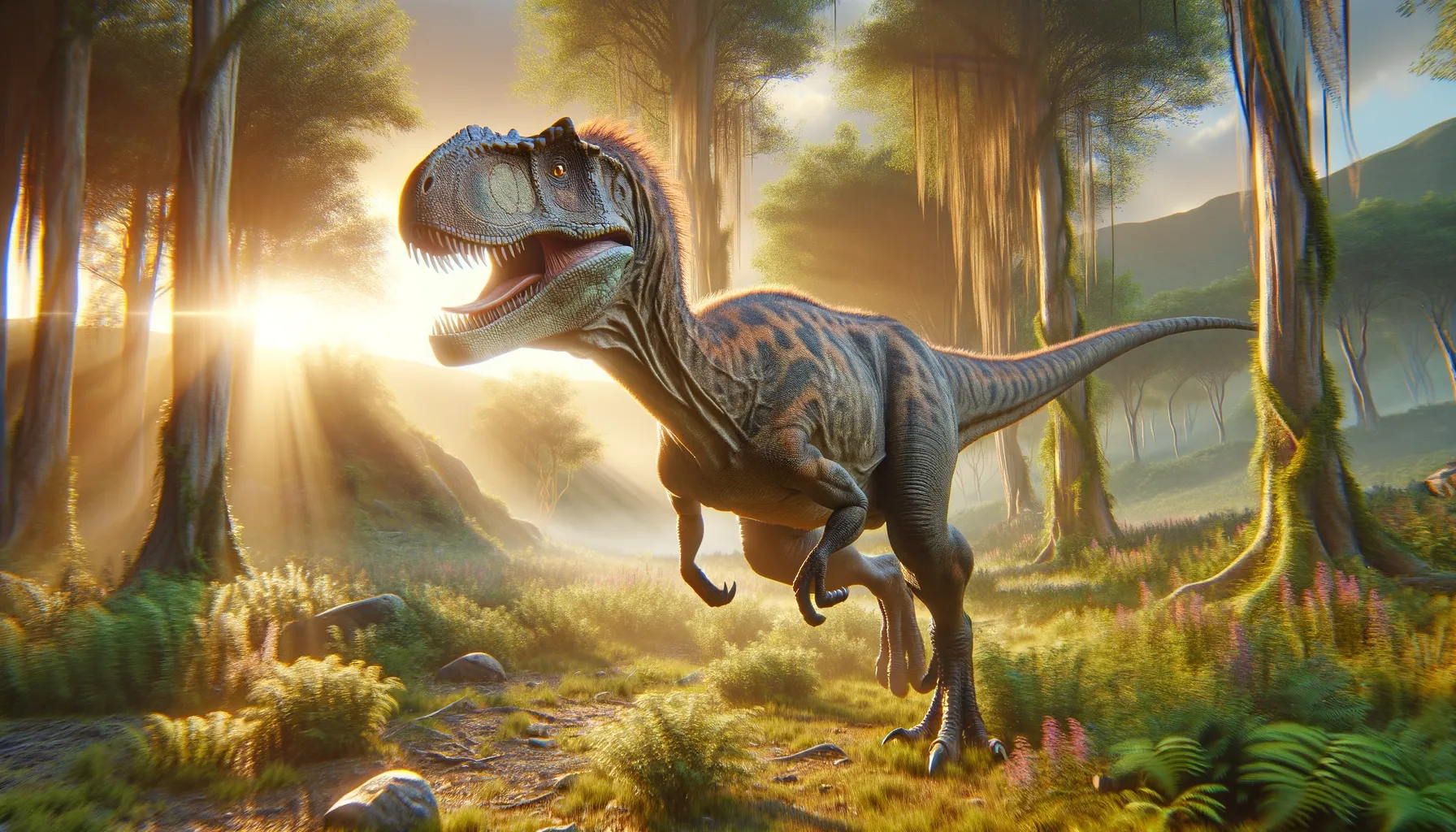
Chuandongocoelurus
Agile hunter from the Jurassic shadows.
Period
Jurassic
Length
Measured roughly 2 to 3 meters long.
Height
Stood about 1 meter tall.
Weight
Approximately 20 to 25 kilograms.
Chuandongocoelurus was a small-sized theropod dinosaur that roamed the Earth during the Jurassic period. Known for its light build and agile movements, these dinosaurs were well-adapted to a predatory lifestyle. Although not as towering as its more famous counterparts, its discovery enriched our understanding of the diversity among theropods. Its fossils have provided valuable insights into the evolutionary history of small carnivorous dinosaurs in China.
Diet
Chuandongocoelurus primarily fed on small animals and insects. Its swift movements and sharp teeth made it an effective predator in its habitat.
Hunting
The dinosaur likely used its agility to chase down small prey. It relied on its keen senses to track and catch animals, quickly using its jaws and claws.
Environmental challenges
Living in a diverse ecosystem, Chuandongocoelurus faced competition from other small theropods. It needed to adapt to a dynamic environment with changing resources. Seasonal variations and competition for food would have shaped its survival strategies. Predation by larger dinosaurs or carnivorous animals also posed significant challenges.
Speed
Moderate pace suitable for short bursts.
Lifespan
Estimated around 10 to 20 years.
First discovery
Discovered in the Sichuan province of China in 1984.
Fun Facts
- Chuandongocoelurus was a small carnivorous dinosaur from the Middle Jurassic period, about 165 million years ago.
- This dinosaur was discovered in the Sichuan Province of China, a region rich in dinosaur fossils.
- Chuandongocoelurus is known from only a few bones, making it a bit of a mystery to paleontologists.
- Despite its size, it was likely a swift predator, probably hunting small animals for food.
- The name Chuandongocoelurus means 'hollow tail vertebra from Sichuan', referring to its hollow bones.
- It is part of a group of dinosaurs called theropods, which also include the famous Tyrannosaurus rex.
- Chuandongocoelurus is a reminder of the diversity of dinosaur life during the Jurassic period.
Growth and Development
Starting from small hatchlings, Chuandongocoelurus grew rapidly to reach maturity. Growth rates would have varied depending on environmental conditions and food availability. Factors like diet quality and predation risks influenced its developmental stages. Its skeletal structure evolved to support its active predatory lifestyle.
Habitat
Chuandongocoelurus lived in a forested environment with lush vegetation. The region offered ample hiding spots and hunting grounds. Access to water sources would have been crucial for its survival. Its habitat supported diverse dinosaur species, contributing to a vibrant ecosystem.
Interaction with other species
As a small predator, it interacted with prey species and faced competition from other theropods. It might have occasionally scavenged carcasses left by larger predators. These interactions played a role in maintaining ecological balance. Its presence influenced the behaviors and adaptations of other species in its ecosystem.
Natural lifespan
In the wild, it could live up to two decades.
Reproduction
Reproduction involved laying eggs in well-protected nests. Parental care might have extended to guarding nests against predation. Hatchlings faced immediate survival challenges once emerging from eggs. Climate and environmental conditions influenced reproductive success.
Social behaviour
Generally considered solitary, possibly forming small hunting groups. Interactions mainly involved finding food and avoiding larger predators. Territorial behavior might have occurred during the breeding season. Communication could include vocalizations or visual displays.
Fossil locations
Fossils of Chuandongocoelurus have been found in the Eastern Sichuan Basin of China. This discovery has expanded our knowledge of theropod diversity in Asia. The specific location offers clues about its living environment. Fossil evidence continues to aid in reconstructing the Jurassic landscape.
